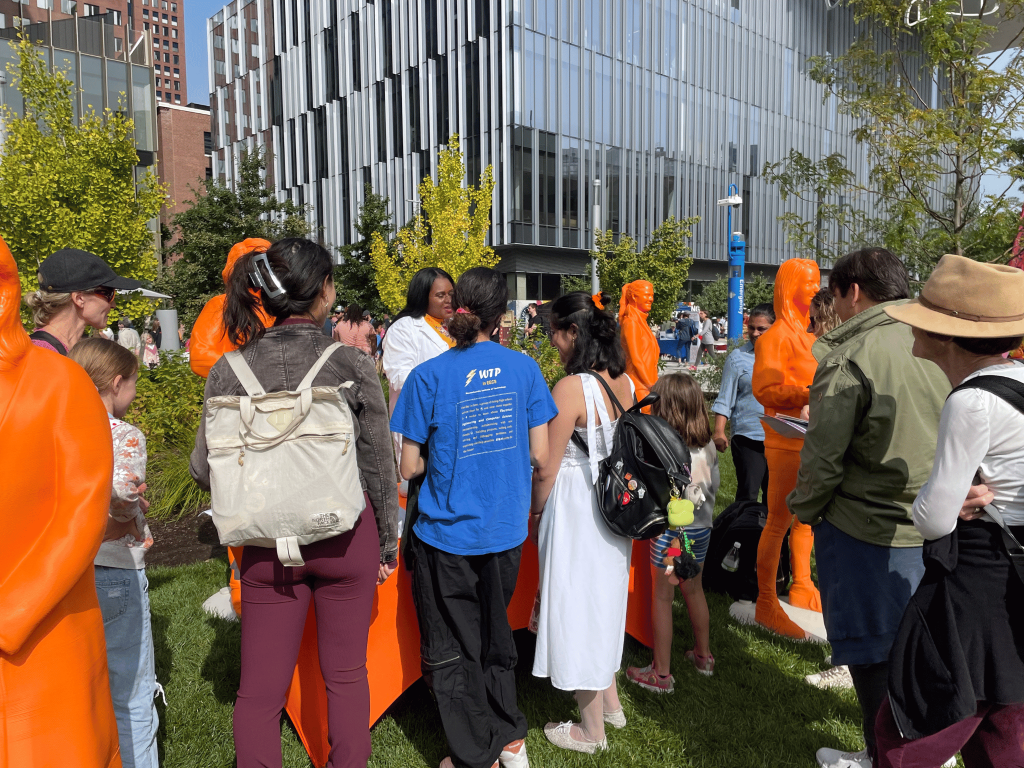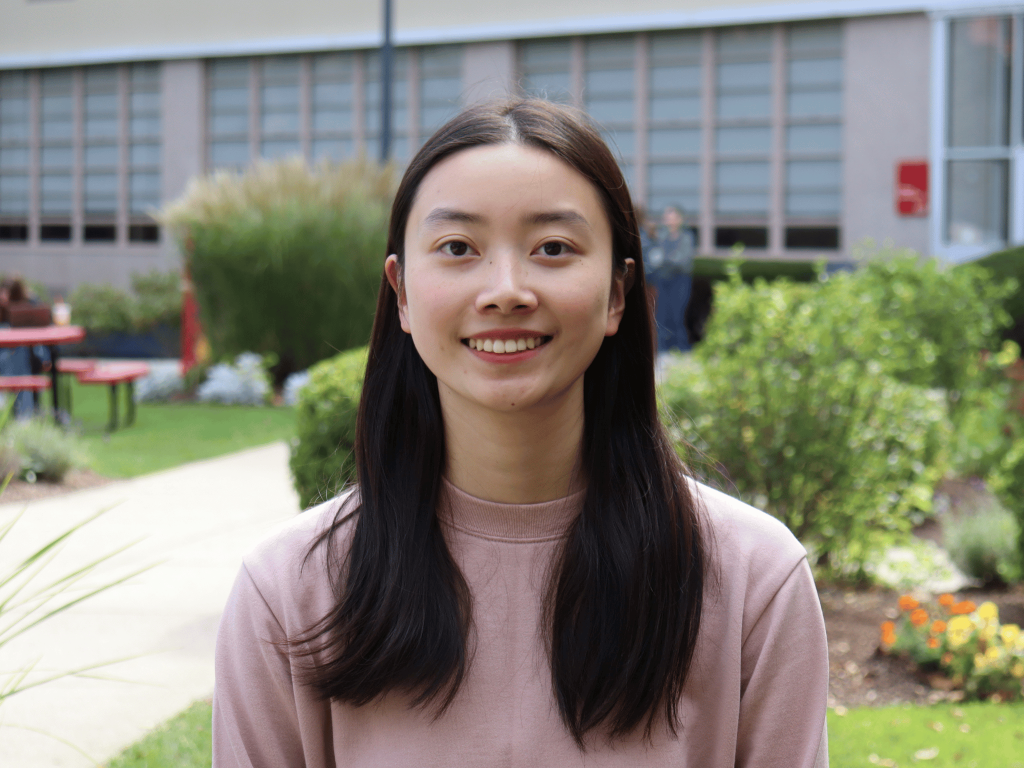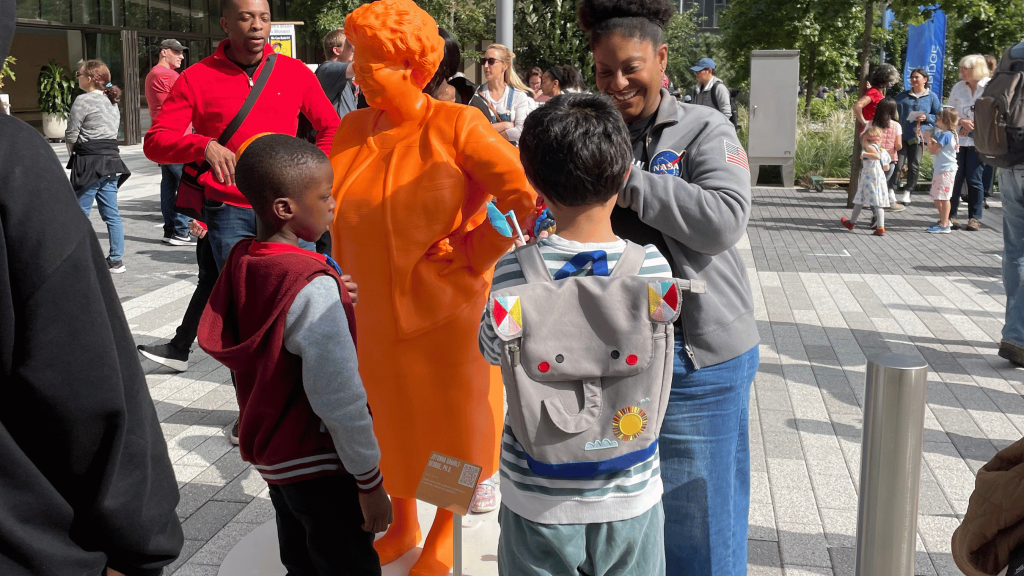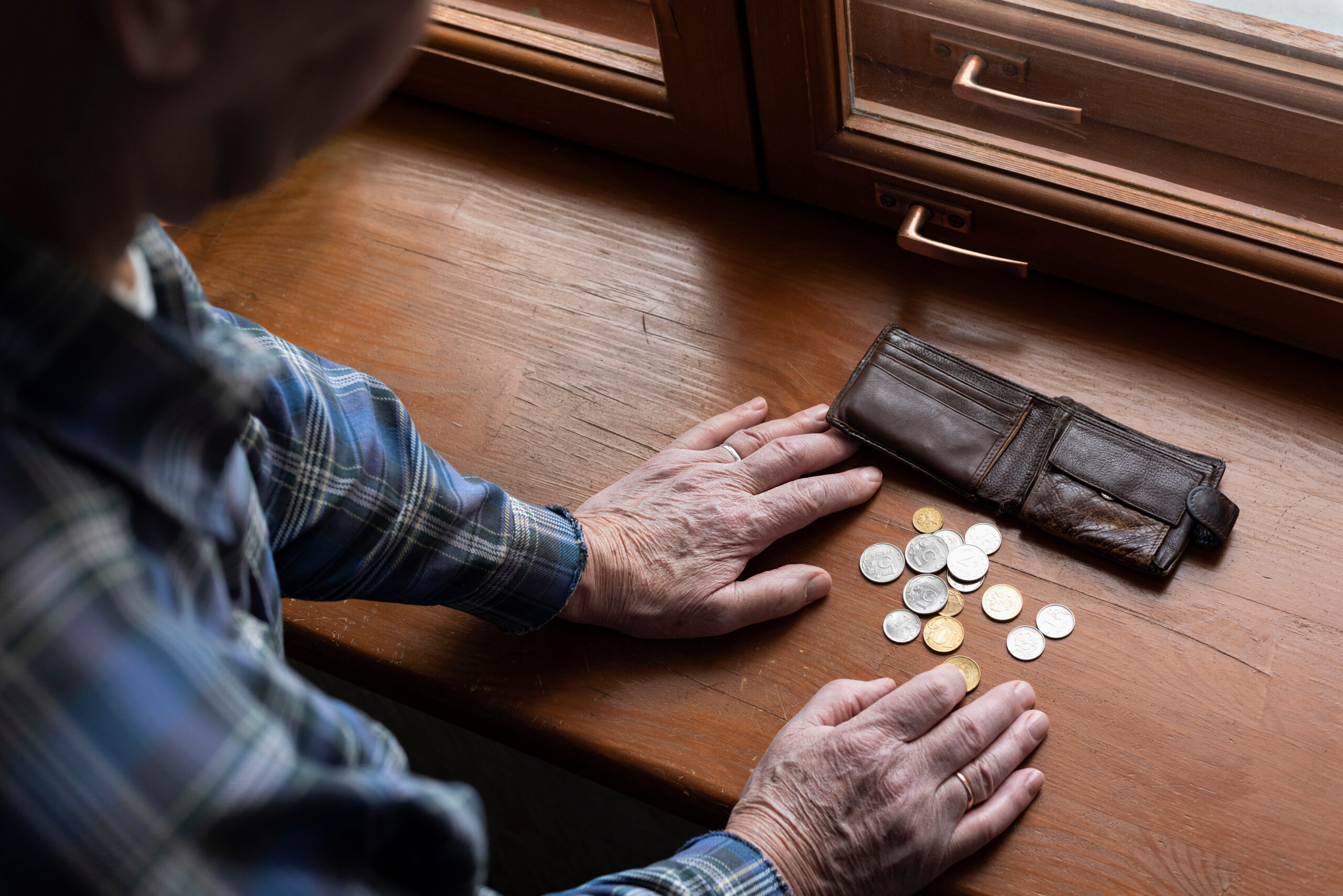BOSTON—Female scientists stood near life-sized statues—all in vibrant orange—this fall to highlight women in science, technology, engineering, and mathematics: fields struggling to close a nagging gender gap.
The display, part of the #IfThenSheCan exhibit that showcases trailblazers in STEM, paired 3-D printed statues with contemporary women of color innovators at the Cambridge Science Festival at the Massachusetts Institute of Technology.
In the male-dominated world of STEM, both organizers and attendees stressed the importance of showcasing the stories and the work of female scientists to inspire the next generation of women in STEM.
“Science is the solution to all of our problems in the world,” said Christina Symons, a geologist and the communication ambassador of the IF/THEN® Initiative that represents the exhibit. “If you don’t have every perspective represented in the conversation, how are you possibly going to solve the problem?”
The individual stories of the women the statues represent—accessible through QR code-linked videos, images, and biographies—“highlight how a more diverse, more inclusive workforce will strengthen the world’s shared future,’’ reads the website of Lyda Hill Philanthropies, the exhibit’s sponsor.
The real-life scientists at the exhibit also look to encourage young girls to consider a career in STEM.
Paola Morlet, a Hispanic health coach, said seeing the actual person with the statue is “huge” for her 7-year-old daughter.
“She is very interested in the solar system,’’ Morlet said. “So having these women here … is an inspiration for her. She can make things happen if she really dreams it.”
Susan Hockfield, a neuroscientist who became the first woman president of MIT, said the IF/THEN initiative is a “beautiful idea.”
“Seeing is believing,” said Hockfield at the event’s opening celebration on Sept. 27. “When a girl sees a woman who looks like her, successfully pursuing a STEM career and having some fun at it, she is much more likely to imagine a STEM career for herself and perhaps, even the possibility that she can change the world.”
Women make up 27 percent of the STEM workforce this year, according to the U.S. Census Bureau.
That is a significant improvement from 1970 when women were only 8 percent of STEM workers. But despite progress in gender equity and growing interest over the last decade in computer science, engineering, math, and statistics, women continue to be underrepresented in STEM, according to data collected by MIT.
Barriers include stereotypes that discourage women from pursuing STEM careers, a lack of role models—particularly in STEM leadership—general gender bias, and work-life imbalances, according to the data.
Female scientists and spectators at the exhibition shared their experiences of studying STEM, overcoming imposter syndrome, and finding ways to inspire their daughters.

Judy Nee, a physician in Cambridge, came to the festival with her daughters and said the support and openness for women in STEM now will break through misconceptions and make a change.
Yamilée Toussaint Beach, a Black scientist who was featured in the exhibit, said she combines engineering with dance. She graduated from MIT in 2008 with a bachelor’s degree of science in mechanical engineering.
“Being in Cambridge today just reminds me of 15 years ago when I was here and really feeling like I didn’t fit in,” said Toussaint-Beach in an interview. “But I grew so much from it … I got to see the power of having an engineering mindset.”
At times, Toussaint-Beach said she felt “odd” about her interests in engineering and dancing, but her interests allowed her to create STEM from Dance, a nonprofit organization that allows girls to dance with the aid of technologies such as lit-up sneakers and computer-programmed projections, said Toussaint-Beach.
“I hope [my statue] inspires anyone, especially girls and people of color, that it is possible to endure those difficult experiences and come out stronger because of it,” said Toussaint-Beach.
Lataisia Jones, a neuroscientist and the first African American to get a Ph.D. from the Department of Biomedical Sciences at Florida State University, said that although a lot of times she was the only Black women scientist where she worked and studied, she eventually got over that “imposter syndrome,” where she was filled with doubt about whether she belonged in the field she was in.
“So, now, I motivate myself to stay in those spaces by saying ‘one day I’m gonna be able to bring somebody else into this space that looks like me and motivate them to stay in the space too,’” Jones shared in an interview. “Eventually we’ll flip it where there’s a balance across the board.”
Raji Harikrishnan, a former software engineer who identifies as South Asian, said she wished she had seen an exhibition like this when she was young.
“It’s amazing that they have all these statues here with the people that the statues are representing,” Harikrishnan said. “It makes such a difference to be able to talk to somebody living and not just reading about some figure in a textbook.”
Although the IF/THEN initiative highlights women in STEM, it also aimed to bring attention to the lack of gender representation in the world of statues across the country.
In 12 major U.S. cities, including Washington, D.C. and New York, fewer than six statues of historic American women are represented in public, according to the 2016 National Historic American Women Statue Initiative.
The entire exhibition, 120 statues, was displayed in Dallas in 2021 and Washington, D.C. in 2022 before being distributed across the country.
Six of the IF/THEN statues representing MIT alums will be installed at the university for the next several months, said CEO Nicole Small of Lyda Hill Philanthropies, who started the If/Then initiative, at the opening celebration. Two statues will be permanently placed at Boston University’s Center for Computing and Data Science.
This report was published in collaboration with the Boston University School of Communications School of Journalism. The journalism student is a member of a Reporting in Depth class taught by former Boston Globe reporter Meghan Irons.

Xiaoya Shao is a junior studying Journalism and English at Boston University. She is a first-generation college student from Wuhan, China. Her aspiration for writing fuels her to continue representing the communities. Besides writing news, she also takes a great interest in photography. She is looking forward to pursuing stories and enriching her portfolio in the near future.
Correction: In a previous version of this story, the article’s photos had the incorrect captions.




